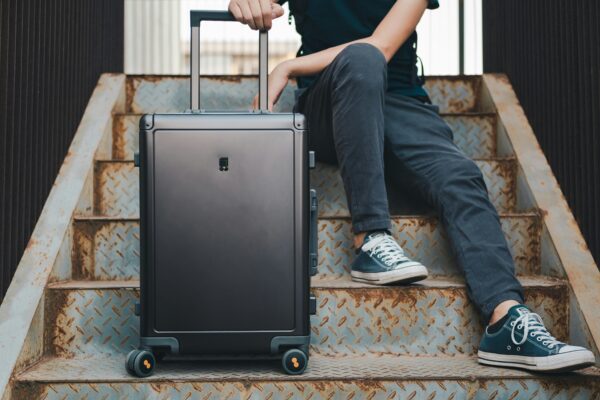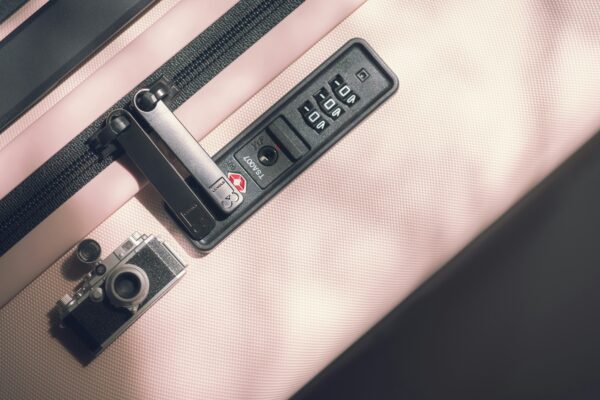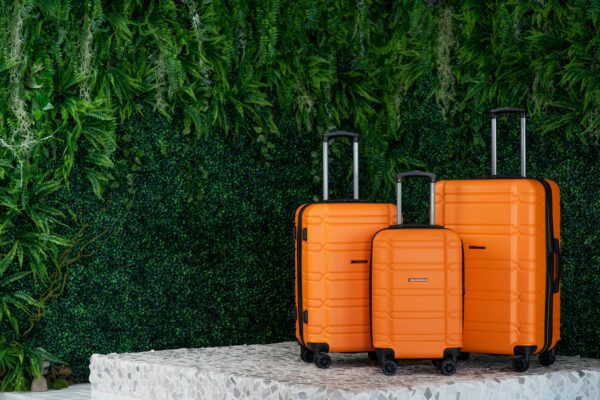Table of Contents

Flying with budget airlines has opened up incredible opportunities for affordable travel, allowing millions of people to explore more destinations without breaking the bank. However, these low-cost carriers often come with a set of limitations that can catch unprepared travelers off guard. One of the most significant challenges lies in managing your luggage effectively—specifically, mastering the use of carry on luggage. This seemingly small detail can have a major impact on your travel experience.
Budget airlines are known for strict baggage rules, surprise fees, and limited overhead space, all of which can lead to stress, delays, and additional costs if you’re not careful. But here’s the good news: with the right strategies, it’s possible to travel light, smart, and hassle-free. This comprehensive guide will equip you with expert-level carry-on luggage hacks for budget airlines that will help you pack efficiently, move through airports with ease, and save money on your journey. Whether you’re a frequent flyer, a digital nomad, or a first-time traveler, understanding how to make the most of your carry-on luggage is a skill that pays off in every trip.
Understanding Carry On Policies of Budget Airlines
Understanding the carry on luggage regulations of the low-cost airline you are traveling with is crucial before you even consider what to pack. Regarding the size, weight, and quantity of carry on luggage permitted, each airline has its own regulations and restrictions. Airlines such as JetBlue or Southwest may allow a full-sized carry-on without charging extra, while Ryanair may only allow a small personal item for free. It is well known that Spirit Airlines and EasyJet impose exorbitant fees for bags that surpass their stringent carry-on restrictions.
For the most up-to-date information, always visit the airline’s website and carefully review the fine print. To make sure your bag meets their requirements, weigh it at home and take precise measurements. Many low-cost airlines are extremely stringent and may require you to pay a hefty fee to check your bag at the gate if it exceeds their limits. It’s also a good idea to check if your airline’s size measurements include wheels and handles, as this can have a significant impact. You can plan your packing, avoid expensive last-minute fees, and travel with more peace of mind if you know what you’re permitted to bring.

Best Types of Carry On Luggage for Budget Airlines
Making the correct carry-on luggage choice is essential to your trip, particularly if you’re flying with a low-cost airline that has strict weight and size restrictions. Choose a bag that satisfies the precise size requirements set by your airline and is lightweight, small, and adaptable. The structured shape and ability to protect delicate items make hard-shell suitcases ideal for handling and stacking in overhead bins. Soft-shell bags, on the other hand, provide greater versatility and are frequently simpler to fit into confined areas beneath seats or in overhead bins.
A carry on luggage with several pockets and compression straps can be a lifesaver for frequent travelers, enabling you to swiftly retrieve necessities and distribute weight evenly. To guarantee longevity and ease of mobility, look for bags with strong telescoping handles, smooth-rolling wheels, reinforced corners, and long-lasting zippers. Packing cubes and internal compartments can also help you make the most of your space and keep your belongings organized.
Every ounce matters when you’re dealing with stringent airline weight restrictions, so always take the bag’s empty weight into account. Finding the ideal carry-on requires striking a balance between functionality, longevity, and legal compliance.
Strategic Packing: Roll, Don’t Fold
Learning how to pack is one of the best carry on luggage tips for low-cost airlines. The amount of clothing you can bring can be significantly impacted by how you pack it. Try rolling your clothes tightly instead of folding them. You can arrive looking fresh without using an iron by rolling, which also reduces wrinkles and saves space. To keep everything organized and expedite the unpacking process, group similar items—such as shirts, pants, underwear, and accessories—using packing cubes.
In order to make more room for other essentials, compression bags can also be used to squeeze air out of bulkier items like jeans, jackets, and sweaters. Pack multipurpose items and layer your clothes if you’re going somewhere with unpredictable weather. Maintain a neutral color scheme so that you can easily mix and match your outfits and bring fewer items while still having a variety of options.
To maintain your bag upright and balance weight distribution, place heavier items at the bottom. For convenient access, always keep your necessities at the top or in an outside pocket, such as prescription drugs, toiletries, and travel documents. Effective and comfortable travel is the goal of smart packing, not just space conservation.
Personal Items: A Secret Weapon for Extra Storage
In addition to your carry on luggage, the majority of low-cost airlines permit one personal item, which astute passengers make the most of. Whether it’s a laptop bag, tote, or backpack, your personal item can be an essential addition to your packing space. Make sure the bag you select fits comfortably beneath the seat in front of you and has several pockets and strong straps.
Store your most valuable belongings in this bag, including books, chargers, snacks, electronics, and important documents. Additionally, it’s the ideal location to store a lightweight scarf, a change of clothes, or even a small travel pillow. You can redistribute weight and prevent tipping the scale at the gate by making effective use of this personal item to drastically reduce the weight of your primary carry-on.
Consider your personal item to be your in-flight survival kit, with everything you’ll need conveniently located for the duration of your trip. Make the most of every available space with this bag, which includes outside pockets for things like water bottles or boarding passes. In addition to keeping you organized, this calculated approach guarantees that you are ready for any last-minute needs or layover delays.
Wear Your Heaviest Clothes to Save Space
Wearing your heaviest clothes and accessories on the plane will help your carry on luggage fit more items. This is a tried-and-true tip from seasoned travelers. Wearing a heavy sweater, hiking boots, or a bulky jacket that would otherwise take up valuable bag space is one example of this. Additionally, you can use the pockets in your outerwear to hold small items like a small book, snacks, or your phone charger.
Although it may seem a little awkward to layer up at the airport, the advantages frequently exceed the short-term discomfort. This tactic is even more helpful for tourists going to colder regions because winter clothing is typically heavy. Wearing layers also allows you to adjust to changes in cabin temperature.
Making thoughtful clothing choices will help you pack much less in your carry-on and adhere to airline regulations without compromising necessities. Just be sure that the clothes you select are easy to take off during security checks and comfortable enough for the duration of your trip. A smart and frequently required strategy for flying light with low-cost airlines is to wear your weight rather than pack it.

Toiletries and TSA-Approved Items
Following TSA liquid regulations is mandatory when traveling with only carry on luggage. Every liquid must be in a single, transparent, quart-sized zip-top bag and in containers no larger than 3.4 ounces (100 milliliters). Although you can still travel comfortably with some preparation, this restricts the quantity of personal care items you can bring. Choose solid toiletries that don’t count toward the liquid limit, such as deodorant sticks, toothpaste tablets, shampoo bars, and solid lotion.
Compared to liquid versions, these solid substitutes are often more durable, compact, and mess-free. Invest in leak-proof travel bottles and make sure they are properly labeled for the liquid items you do bring. For easy access during security checks, place the quart-sized bag in an outside pocket or on top of your luggage. Remember to bring necessities like sunscreen, face wipes, lip balm, and any prescription drugs you may need. To prevent spills, double-bag potentially messy items like face cream or hair gel. Effective toiletry packing keeps you odor-free, complies with security regulations, and keeps your favorite items from being seized.
Packing Smart Tech: Cords, Chargers, and Gadgets
You need to carefully pack your tech equipment if you want to stay connected while traveling. To keep your earbuds, chargers, cords, and other tiny electronics neat and handy, start with a small tech organizer. If you’re going abroad, bring a universal power adapter and a high-capacity power bank so you can keep your electronics charged while you’re on the road. Because low-cost airlines frequently don’t provide free Wi-Fi or onboard entertainment, load your devices with music, movies, books, and travel guides.
For extra convenience, think about investing in a foldable laptop stand or a Bluetooth keyboard if you intend to work during your flight or layover. Store your tech in your personal item for easy access during security checks and flights. Also, don’t forget to back up important data before traveling and enable password protection on your devices. This ensures your information stays safe in case of loss or theft. Organized tech packing helps you stay productive, entertained, and stress-free during your trip.
Food and Snacks: Avoid In-Flight Charges
Since free meals are rarely offered by low-cost airlines, packing your own food is a wise way to avoid expensive tickets and a small selection. Snacks that are acceptable by TSA include trail mix, granola bars, crackers, dried fruit, or sandwiches devoid of liquids or sauces. To keep things organized and fresh, use reusable containers. Food temperature can be maintained while traveling with the use of a small insulated bag or a collapsible lunchbox. Once you’ve passed security, fill up your reusable water bottle.
It’s important to stay hydrated when flying, especially because the air in the cabin is dry. You can stay within dietary restrictions or preferences and steer clear of unhealthy airport food by planning your meals. Eating healthily during flight enhances comfort, lessens fatigue, and helps you land feeling rejuvenated. Smart snack planning is one of the most underrated yet effective carry on luggage hacks for budget airlines.
Security Hacks: Breeze Through Checkpoints
Getting through security quickly can make your entire trip more enjoyable. Use TSA-approved bags for laptops and liquids, stay away from belts and large jewelry, and wear shoes that are easy to take off. Keep your ID and boarding pass in a special pocket that is convenient for you. To make it easier to remove your electronics and liquids bag at the checkpoint, place them in an outer compartment or on top of your carry on luggage.
To avoid standing in line and having to take off your shoes and laptops, if you travel frequently, think about signing up for TSA PreCheck or Global Entry. You can go through the screening process swiftly and without stress if you keep organized and know what security will ask for. You will have more time to unwind or take care of any last-minute issues prior to boarding if your security check goes smoothly.
Practice Makes Perfect
It takes time to become proficient with carry on luggage for low-cost airlines, but with practice, it becomes second nature. You learn more about what you really need and what you can live without on each journey. Make a master packing list that you can modify and improve over time. Keep abreast of modifications to airline policies and travel light with assurance. You’ll save money, streamline your travel schedule, and take charge of your trip by using these carry on luggage tips for low-cost airlines. Adopting a minimalist travel philosophy improves the trip overall and saves money by letting you concentrate on the adventure rather than the details.
Frequently Asked Questions
What is considered carry on luggage for budget airlines?
Carry on luggage typically refers to a small suitcase or bag that meets the specific size and weight limits set by the airline. Budget carriers often allow one free personal item and may charge for a standard carry-on. It’s essential to check exact measurements on the airline’s website before your trip.
How can I avoid extra baggage fees with carry on luggage?
To avoid extra fees, ensure your bag meets size and weight limits, wear your heaviest clothes on the plane, and make full use of your personal item. Always weigh your bag at home and double-check policies before heading to the airport.
Are backpacks allowed as carry on luggage?
Yes, many budget airlines accept backpacks as either a carry on or a personal item, depending on the size. Make sure it fits under the seat or in the overhead bin as per airline guidelines.
Can I bring food in my carry on luggage?
Absolutely. Solid foods like snacks, sandwiches, and fruits are allowed. Avoid liquids, gels, or anything that might be flagged by security. Packing your own food helps you save on costly in-flight purchases.
What are the best packing methods for carry on luggage?
Rolling clothes instead of folding, using packing cubes, and wearing bulky items are top strategies. Opt for multi-purpose clothing and compressible items to maximize limited space efficiently.
How do I choose the right carry on bag for budget airlines?
Pick a lightweight, compact, and durable bag that exactly meets the airline’s carry-on size requirements. Soft-shell bags and travel backpacks are great for flexibility and squeezing into tight compartments.
Can I bring electronics in my carry on luggage?
Yes, and it’s recommended. Store phones, laptops, chargers, and power banks in your carry-on or personal item. Keep them accessible for easy removal during security screening.
What toiletries are allowed in carry on luggage?
Only liquids under 3.4 oz (100 ml) are allowed, and they must fit in a quart-sized clear zip bag. Solid toiletries like shampoo bars or toothpaste tablets are great space-saving alternatives.
Do budget airlines allow a personal item in addition to carry on luggage?
Most do allow one free personal item like a small backpack or tote. Use it wisely by packing essential items such as electronics, snacks, documents, and a change of clothes.
How can I get through airport security faster with carry on luggage?
Wear easy-to-remove shoes, keep liquids and electronics accessible, and avoid metal accessories. Packing in an organized way makes it easier to comply with TSA rules and breeze through checkpoints.



